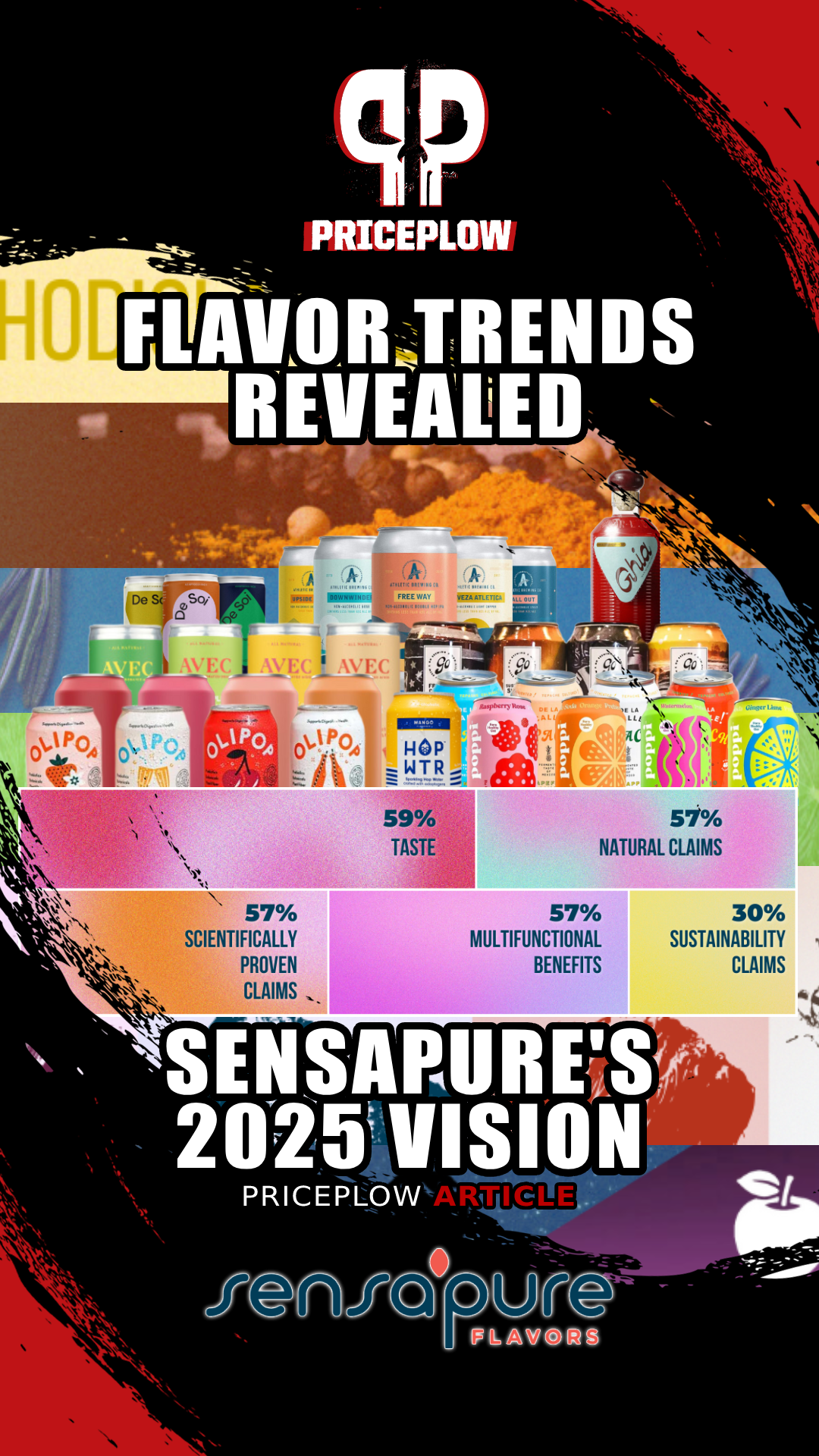
Sensapure Flavors predicts major 2025 flavor trends: Aromatics like elderflower and lavender, exotic fruits, and natural spices lead functional beverage innovation. Plus their new OMVE pilot plant changes the development game.
Following their ground-breaking work on XPO NRG at SupplySide West 2024, the experts at Sensapure Flavors have released their flavor and ingredient trend forecast for 2025. After visiting their new Innovation Center in Salt Lake City and spending hours discussing flavor technology with Scott Zimmerman and Derek Greer on Episode #149 of the PricePlow Podcast, it's clear that Sensapure is at the forefront of functional flavor development.
What’s in Store for Flavors in 2025? Sensapure Flavors Weighs In
The upcoming year promises significant shifts in how supplements and functional beverages are flavored, with three major categories emerging alongside new delivery technologies and format innovations. More importantly, Sensapure's insights reveal how these trends connect to the industry's most challenging ingredients and evolving consumer preferences.
'Back to Basics' Wellness: Functional Benefits and Clean Labels
Before diving into the specific flavor trends that will dominate 2025, it's important to understand the fundamental shift in consumer attitudes driving these changes. The data shows a clear movement toward "back to basics" wellness, with functional benefits and clean labels becoming increasingly important to supplement users.[1]
Let's explore how these emerging trends are reshaping the landscape of supplement and functional beverage development, starting with the core shift in consumer priorities. Sign up for our Sensapure Flavors news alerts to receive a major announcement coming soon, and then let's get into it:
Subscribe to PricePlow's Newsletter and Sensapure Flavors Alerts
Back to Basics: Consumer Focus on Core Benefits
Today's consumers understand that even the best supplements can be undermined if they're not getting the fundamentals right. Market research indicates that sleep quality, stress management, and proper hydration have become primary concerns,[1] creating a ripple effect in how brands develop and flavor their products.
This shift toward foundational wellness has led to fascinating developments in functional beverage formulation. Supplement brands are now tasked with creating products that not only deliver targeted benefits but also support these core wellness pillars. For instance, pre-workout supplements aren't just about energy anymore – they need to consider long-term health impacts and recovery support as well.
Cleaner Labels, Natural Ingredients, Better Bitterness Masking
The "clean label" movement continues gaining momentum, with consumers scrutinizing ingredient lists more carefully than ever. According to industry data, 57% of global consumers now prioritize natural claims when choosing health products,[1] and we only see this number rising in the future. This creates unique challenges for flavor houses like Sensapure, who must mask bitter functional ingredients using natural flavoring systems rather than artificial solutions.
"Our job is to help brands create products that not only taste good but actually contribute to their customers' fundamental well-being," explained Derek Greer on the PricePlow Podcast, who leads application development at Sensapure's Innovation Center.
This emphasis on core wellness has led to three distinct flavor categories emerging as dominant forces for 2025, each addressing different aspects of the "back to basics" approach while maintaining functionality and clean label appeal:
Three Major Flavor Categories Dominating 2025 at Sensapure
The latest Flavor Trends report from Sensapure Flavors discusses three major categories set to take over 2025, serving as a solid follow-up to their fall 2024 flavor concepts.
-
Aromatics
Aromatic flavors are taking center stage in 2025, led by botanicals like elderflower, lavender, and rosemary. Their profiles aren't just trending for their unique taste characteristics - they're proving to be powerful allies in functional supplements and beverages.
Rhodiola rosea, one of the key adaptogenic herbs presenting unique flavor-masking challenges for formulators developing stress-support products
Elderflower brings a delicate, honey-like sweetness with subtle citrus notes, thanks to its natural linalool content.[2] When combined with adaptogens like ashwagandha or rhodiola, elderflower helps create a more premium, sophisticated flavor profile while supporting the supplement's stress-management properties.
Lavender continues to prove itself invaluable in stress-support formulas. Its distinctive floral notes, attributed to linalyl acetate, not only create a calming sensory experience but also help mask the earthiness of functional mushrooms and other adaptogenic ingredients.[3]
Rosemary rounds out the aromatic trinity with its bold, piney character derived from natural camphor and cineole compounds.[4] Beyond its flavor impact, rosemary helps balance and enhance other botanical ingredients while providing excellent support for minerals and amino acids that can be challenging to flavor.
These aromatic profiles are especially effective when:
- Formulating with mushroom-based ingredients like Lion's Mane or Reishi
- Creating stress-support or sleep supplements
- Developing more sophisticated functional beverages
- Masking bitter adaptogenic compounds
Key consumer insights showing the interconnection between anxiety (30%), hydration awareness (64%), and demand for personalized products (59%) driving 2025 supplement formulation trends
The success of these aromatics lies in their ability to create complex, layered flavor experiences while simultaneously improving the overall taste profile of functional ingredients. They're proving essential for brands looking to differentiate their products in an increasingly crowded wellness market.
-
Exotics
The exotic flavor category is bringing global sophistication to functional beverages and supplements in 2025, with golden mango, yuzu, and calamansi leading the charge.
Golden Mango brings a tropical treasure trove of flavor - luscious, juicy, and bursting with sweetness, owing its profile to terpenes like myrcene.[5] Its vibrant, honeyed notes with subtle citrus undertones pair exceptionally well with energy and focus ingredients like caffeine and L-theanine, creating an elevated sensory experience that matches the supplement's cognitive-enhancing benefits.
PricePlow is proud to announce XPO NRG, an industry-first collaborative energy drink exclusive to SupplySide West 2024. With 10 partners, we ran 50,000 cans at MacroCap Labs!
Yuzu continues its exponential rise in Western markets, offering a unique citrus profile that falls between grapefruit and mandarin with subtle overtones of bergamot and lime. The distinctive yuzu aroma, rich in limonene (78%) and γ-terpinene (9%), brings a sophisticated edge to nootropic formulations while providing stress-reducing properties.[6]
Calamansi, a Philippine citrus hybrid, combines bright acidity with complex sweetness - imagine a mandarin orange meeting lime with a uniquely tropical twist. Studies indicate its distinctive flavor profile comes from a complex blend of volatile compounds that create a multi-layered sensory experience.[7] This exotic citrus works brilliantly in pre-workout and energy formulations, where its zesty character cuts through the intensity of performance ingredients.
Western Flavor Demand Goes Global
The rise of these exotic flavors reflects several key market dynamics:
- Growing consumer interest in global flavor experiences
- Demand for sophisticated, premium taste profiles
- The need for flavors that complement rather than mask functional ingredients
- Increasing influence of Asian and Southeast Asian cuisine on Western markets
When formulating with exotic flavors, the key is understanding their complexity. These aren't simple single-note profiles - they're sophisticated compositions that can transform functional products into premium experiences. For formulators, this means carefully balancing these exotic notes with active ingredients while ensuring the final product delivers both on flavor impact and functional benefits.
-
Natural Spices
A fiery revolution is taking place in the supplement industry as natural spices move beyond their traditional culinary roles. Exotic spices like turmeric, cardamom, and saffron aren't just adding unique flavor profiles - they're bringing their own functional benefits to sports nutrition formulas and thermogenic supplements.
Trending Spice Profiles
The cardamom family leads the charge with its complex, aromatic notes. Green cardamom provides bright, minty undertones, while black cardamom delivers a deeper, smokier profile. Both varieties help mask the bitterness of active ingredients while adding perceived warmth to thermogenic formulations.[8]
Saffron brings its distinctive honey-like character along with notable cognitive benefits. Research shows that its active compound crocin not only provides its unique flavor but also supports mood and focus, making it an excellent addition to nootropic formulas.[9]
Turmeric continues its growth trajectory, but with a twist - formulators are now using it more for its earthy, peppery notes rather than just its curcumin content.[10] When paired with black pepper in thermogenic formulas, it creates a natural warming sensation that consumers associate with increased metabolism.
There are others, including jalapeño and variations of paprika.
Applications in Sports Nutrition
These spices are finding new roles in:
- Pre-workout formulas where they provide natural energy-signaling flavors
- Post-workout recovery drinks where their warming characteristics aid perception of muscle recovery
- Thermogenic products where they enhance the sensation of heat production
- Endurance formulas where they mask electrolyte minerals
Consumer decision factors in supplement selection: taste (59%), natural claims (57%), scientific validation (57%), multiple benefits (57%), and sustainability (30%)
The appeal of spice-forward profiles in sports nutrition comes from their ability to create multi-dimensional experiences. They don't just mask functional ingredients - they transform them into more complex, appealing flavor systems that signal efficacy to consumers.
Enhanced Functionality
The dual-action nature of these spices - providing both flavor and function - makes them invaluable in modern supplement formulation. For example:
- Cardamom's natural cooling effect helps balance the heat from thermogenic ingredients
- Saffron's distinctive profile pairs well with focus-enhancing compounds while potentially contributing to their effects
- Turmeric's warming character complements thermogenic ingredients while providing its own bioactive compounds
Looking ahead, we expect to see more innovative combinations of these spices with both traditional and emerging active ingredients, creating products that deliver on both taste and functionality.
On the note of drinks, we're obviously seeing beverages make some bold moves:
Beyond Mocktails – New “Adult” Soft Drinks
The rising popularity of GLP-1 medications like Ozempic and Wegovy is creating an unexpected shift in beverage consumption patterns. Recent research shows that these medications don't just affect appetite - they're also linked to decreased alcohol consumption, as the neural pathways targeted by GLP-1s can reduce the "reward" sensation typically associated with drinking.
This biological effect, combined with growing consumer interest in health-conscious alternatives, is driving innovation in the functional beverage space. Beverage manufacturers are responding by developing sophisticated non-alcoholic options that deliver both function and flavor.
These new "adult soft drinks" go far beyond traditional mocktails, incorporating nootropics, adaptogens, and other functional ingredients to create complex flavor experiences. Instead of simply mimicking alcoholic beverages, brands are focusing on unique botanical blends and layered flavor profiles that stand on their own merit.
The market opportunity is substantial - Nielsen data shows that sales of non-alcoholic beverages have increased by over 20% in the past year.[11] Consumers are actively seeking beverages that can provide a sophisticated drinking experience while supporting their health goals.
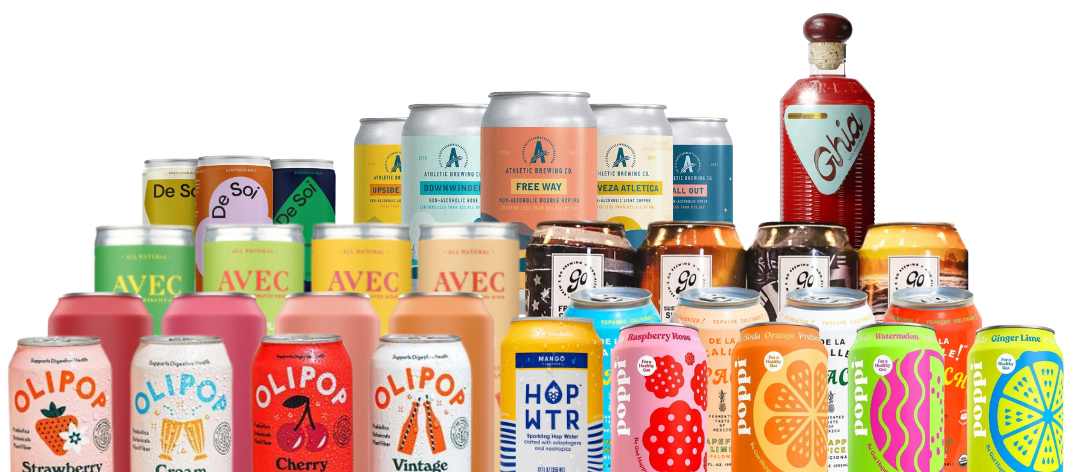
Examples of sophisticated non-alcoholic beverages showcasing the industry's shift toward complex, functional flavor profiles and premium positioning
Key features of successful adult soft drinks include:
- Multi-layered flavor profiles using botanical extracts
- Functional ingredients that support mood, focus, or relaxation
- Premium positioning and sophisticated packaging
- Novel flavor combinations that create "rewarding" taste experiences
For beverage manufacturers, this presents an opportunity to capture both the growing GLP-1 user base and health-conscious consumers looking for alcohol alternatives. Success in this space requires careful attention to both flavor development and functional benefits to create truly satisfying non-alcoholic options.
Trending Active Ingredients and Their Flavor Challenges
The functional beverage market continues to evolve, with several challenging active ingredients continuing to take center stage in 2025. Here's how flavor technology is adapting to mask and complement these trending ingredients:
-
Adaptogens: The Earthy Challenge
The biggest flavor challenge facing product developers in 2025 is the continued rise of adaptogenic ingredients. Ashwagandha root extract, Rhodiola rosea, and functional mushrooms like Lion's Mane, Cordyceps, and Reishi have become mainstream additions to functional beverages – but their strong earthy, bitter notes are notoriously difficult to mask.
Key functional mushrooms (from left to right: Lion's Mane, Reishi, Chaga, and Cordyceps) presenting unique flavor-masking challenges for formulators developing cognitive and adaptogenic supplements
Ashwagandha presents an intense earthy bitterness that requires a multi-layered flavor system approach. The most successful masking strategies combine:
- Sweet and creamy bases to counter bitterness
- Aromatic spice notes like cardamom and cinnamon to complement the earthiness
- Bright citrus top notes to lift the overall flavor profile
Rhodiola poses similar challenges but with an additional astringent character that needs to be addressed. Flavor chemists are finding success with berry-forward profiles that incorporate vanilla and honey notes to round out the experience.
-
Clean Energy Evolution: Paraxanthine Takes Center Stage
Paraxanthine is the primary metabolite of caffeine, providing most of caffeine's beneficial effects. Now you can take it directly with enfinity!
As brands move away from traditional caffeine, paraxanthine has emerged as 2025's clean energy ingredient of choice. While paraxanthine itself has a slightly easier taste compared to caffeine, it can still enhance bitter notes from other ingredients and requires careful flavor balance.
Successful paraxanthine formulations often utilize:
- Crisp citrus and tropical flavor systems
- Enhanced sweetness perception through flavor modulation
- Cooling effects to create a clean, energizing sensation
-
CBD and Hemp: Moving Beyond Masking
The CBD and hemp space has matured significantly, with flavor houses like Sensapure developing sophisticated solutions that do more than just mask the raw, grassy notes of hemp extracts. Modern flavor systems now work to complement these base notes rather than completely hiding them.
Chemical structure of cannabidiol (CBD), which presents unique flavor-masking challenges requiring sophisticated natural flavor systems to complement rather than mask its characteristics
Key strategies include:
- Using terpene-forward flavors that align with hemp's natural profile
- Incorporating botanical elements that enhance the "natural" positioning
- Leveraging flavor modulation technology to reduce lingering bitterness
As we look ahead, the success of functional beverages will increasingly depend on formulators' abilities to tackle these challenging ingredients while delivering great taste experiences that consumers expect. The focus has shifted from simple masking to creating sophisticated flavor systems that complement and enhance the perceived benefits of these active ingredients.
The Future of Functional Beverage Development
Beverage development is notoriously difficult. With countless variables depending on the application format, there's a lot that can go wrong between concept and commercialization. However, Sensapure's advanced OMVE-designed pilot plant equipment is revolutionizing how brands can test and validate their beverage concepts before going to full production.
-
State-of-the-Art Pilot Plant Capabilities
2025 Flavor Direction Example: Lime Yuzu Spark - Showcasing the exotic flavors trend through the combination of familiar lime with premium Japanese yuzu, targeting the energy supplement category
Sensapure's pilot plant can simulate virtually any bottling requirement - from low-acid protein RTDs to acidified juices and carbonated functional beverages. This allows brands to test-run innovative concepts that have never seen a bottling line before, with runs of just a handful of cans or bottles.
Sensapure's advanced beverage processing pilot plant lets them eliminate the guesswork -- they can confirm exactly what will happen to the flavor, stability, and commercial viability of new beverage concepts in small pilot runs before scaling up.
-
Innovation in Beverage Processing
The pilot system supports critical process simulations including:
- Hot-fill capabilities for tea, juice, and sports drinks
- Cold-fill for carbonated and still beverages
- Ultra High Temperature (UHT) processing
- Various pasteurization and carbonation methods
- Aseptic filling capabilities
This comprehensive range of capabilities helps brands validate stability across different processing conditions. For example, heat-sensitive ingredients like probiotics or certain vitamins may degrade during thermal processing, while proteins can denature and create sedimentation issues. The pilot plant allows formulators to identify and solve these challenges early in development.
-
Impact on Supplement Formulation
For supplement brands, this technology is a game-changer that helps:
- Reduce development timelines
- Lower costs of pilot runs
- Validate stability before scale-up
- Test innovative delivery formats
- Troubleshoot formulation challenges
- Optimize flavor systems
Rather than discovering stability or flavor issues after investing in full production runs, brands can now validate their concepts in small batches. This allows for rapid iteration and optimization of both active ingredients and flavor systems.
When you're working with functional ingredients like amino acids, vitamins, minerals, and proteins, processing conditions can make or break your formula. Sensapure's pilot capabilities let brands optimize those conditions while perfecting the flavor system at the same time.
Sensapure's state-of-the-art OMVE pilot plant setup enables small-batch beverage development and stability testing across multiple processing conditions
The OMVE pilot plant represents a significant advancement in beverage development, allowing brands to innovate faster while reducing the risks inherent in launching new functional beverages. As the demand for novel delivery formats continues to grow, these capabilities will be crucial for brands looking to stand out in an increasingly crowded market.
Along with Sensapure's new Innovation Center, the OMVE pilot plant makes visiting Salt Lake City, UT for a round of custom flavor development a must-see, must-try process this year!
Conclusion: What This Means for the Supplement Industry
The supplement industry is at a pivotal moment in flavor innovation. As we look toward 2025, brands face both opportunities and challenges in developing products that not only deliver functional benefits but also provide an exceptional sensory experience.
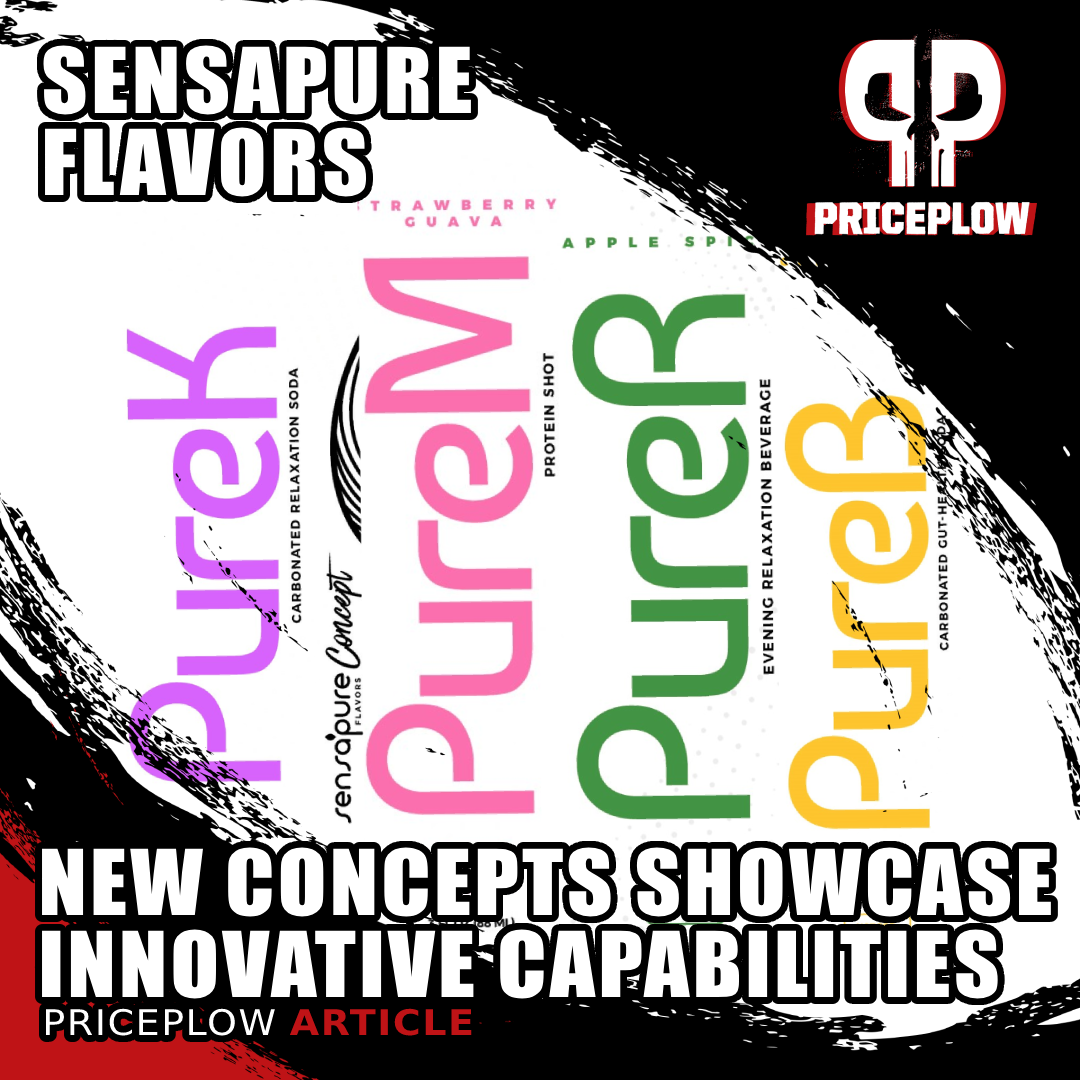
Sensapure Flavors introduces its 2024 beverage concepts, including PURE K, PURE M, PURE B, PURE R, and of course their Lemonade flavor in XPO NRG. These drinks mask functional ingredients naturally while delivering bold, refreshing flavors.
Key Takeaways for Brands
Supplement companies should consider several factors when approaching flavor development:
- Consumer preferences are shifting toward sophisticated, multi-layered flavor experiences
- Clean label requirements demand natural flavoring solutions
- Processing conditions significantly impact final flavor outcomes
- Early-stage flavor development can prevent costly reformulations
- Working with the right flavor partner -- Sensapure Flavors -- is crucial for success
Future Opportunities
The evolution of flavor technology creates exciting possibilities for brands:
- Novel delivery formats enabled by advanced processing capabilities
- Targeted masking solutions for challenging functional ingredients
- Natural alternatives to artificial flavors
- Complex flavor systems that can survive various manufacturing processes
- Innovative ways to enhance perceived benefits through flavor
Working with Flavor Houses
To maximize success in flavor development, brands should:
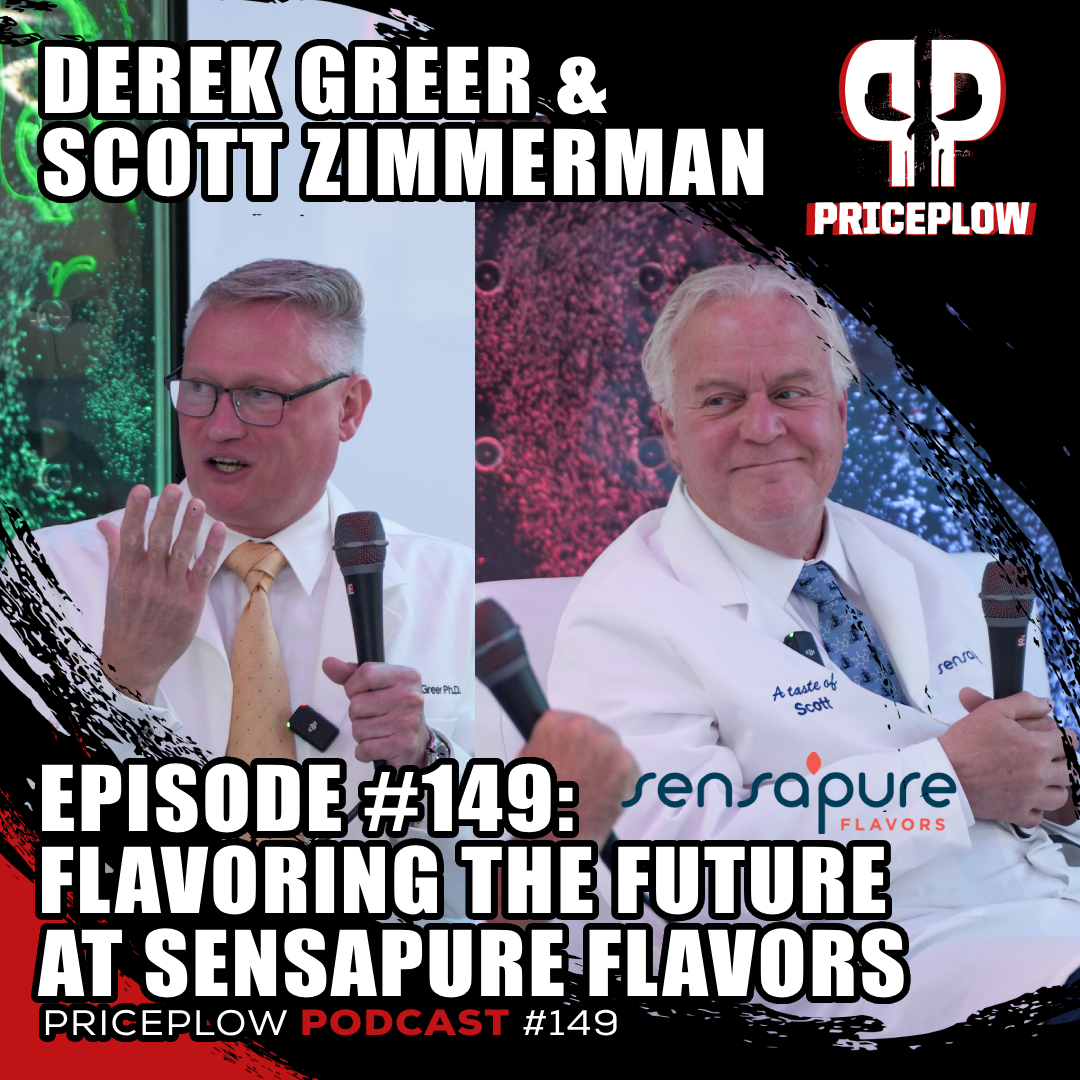
Learn about flavors with Sensapure. Mike and Ben with Scott Zimmerman and Derek Greer of Sensapure Flavors in Episode #149, exploring the art and science of flavor creation in supplements and energy drinks.
- Engage flavor partners early in the development process
- Provide detailed information about processing conditions
- Be clear about target cost parameters
- Consider stability testing across various conditions
- Plan for scalability from pilot to full production
As Scott Zimmerman told us on PricePlow Podcast Episode #149, "It's crucial to involve your flavor partner from the beginning. This allows us to develop systems that not only taste great but also maintain stability through your specific manufacturing process."
The Path Forward
As functional beverages and supplements continue evolving, the role of sophisticated flavor development becomes increasingly important. Brands that leverage advanced flavor technology and processing capabilities will be better positioned to meet consumer demands for great-tasting functional products.
Want to stay updated on the latest flavor trends and technologies? Sign up for our PricePlow Sensapure news alerts to get notified about new developments in flavor science and formulation:


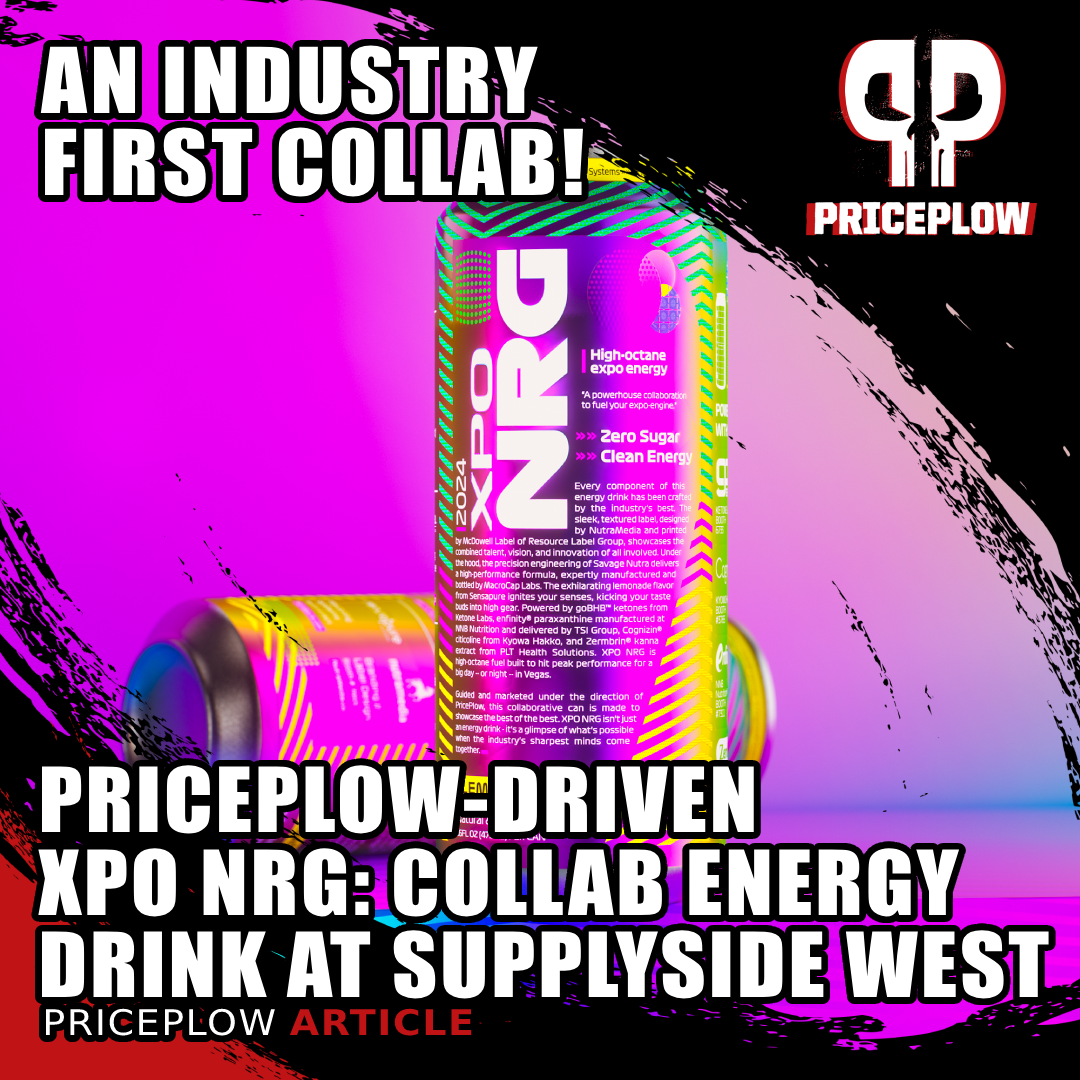




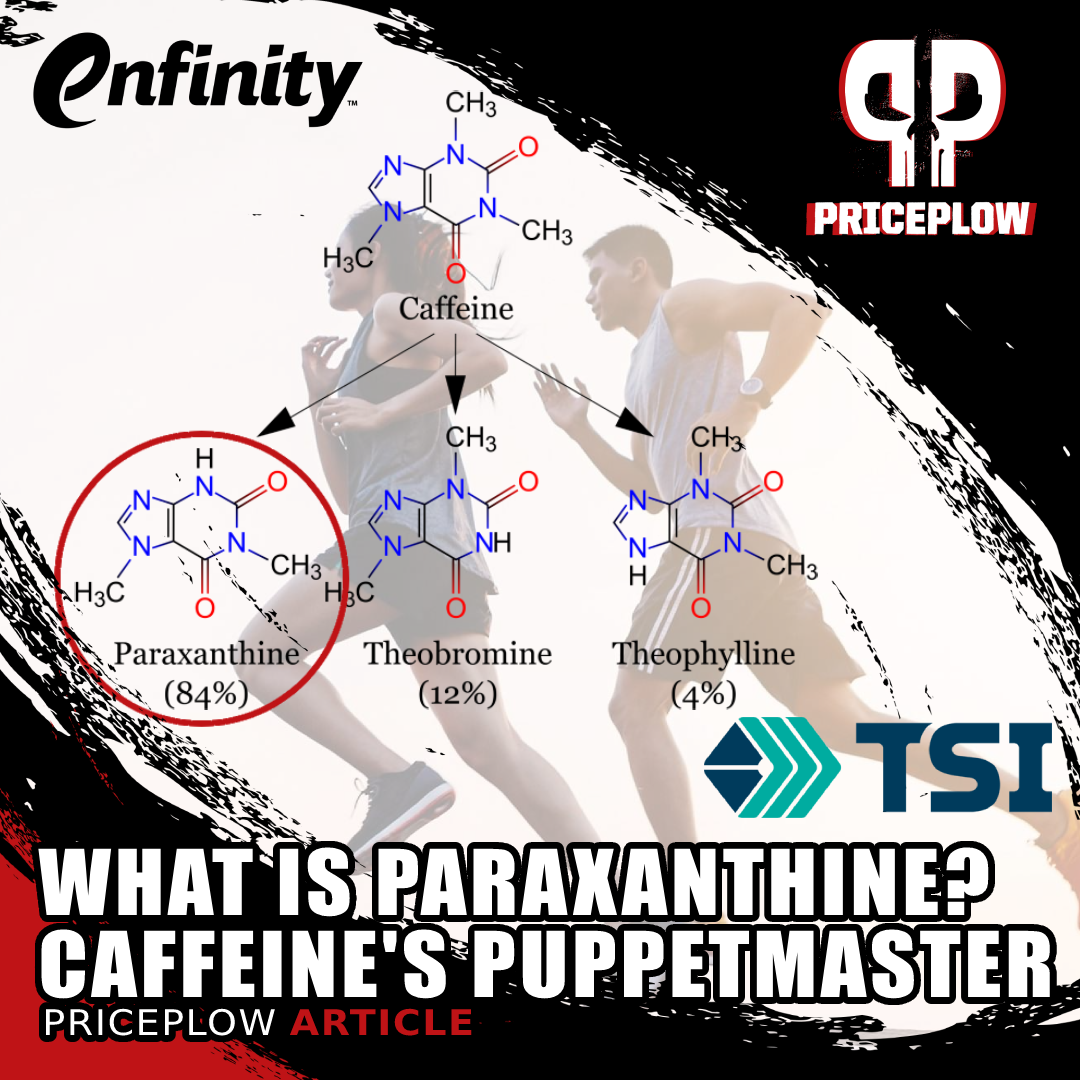
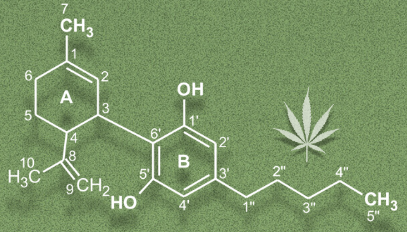
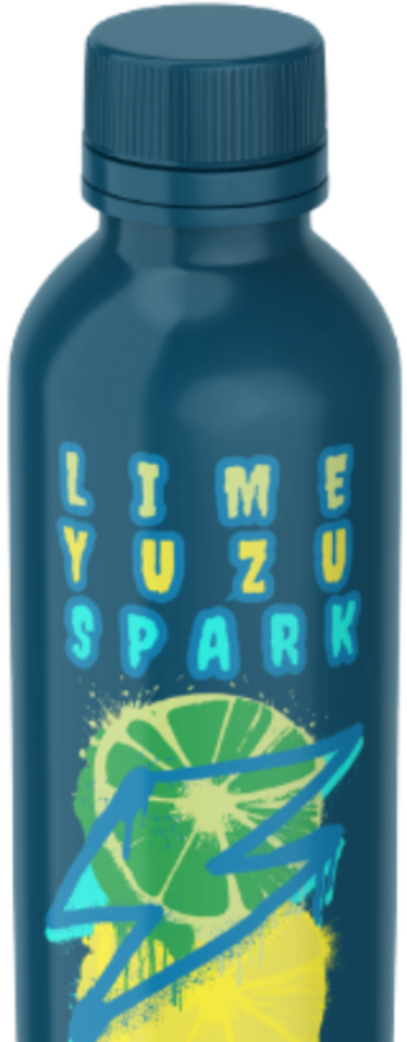


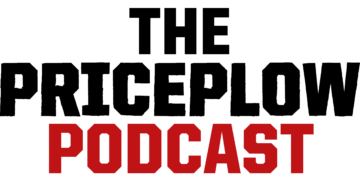
Comments and Discussion (Powered by the PricePlow Forum)